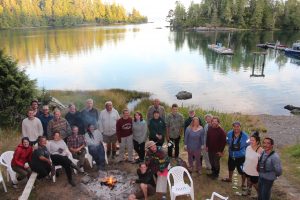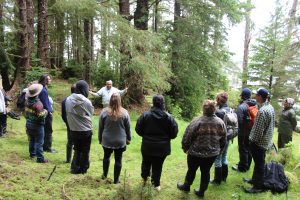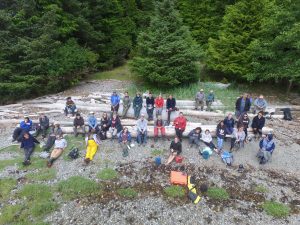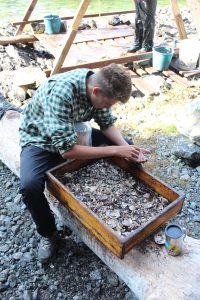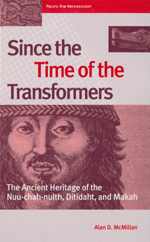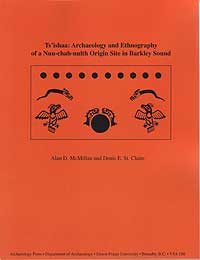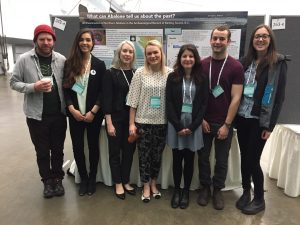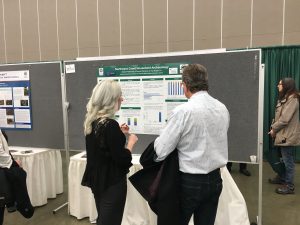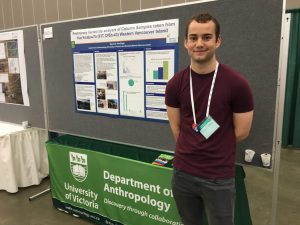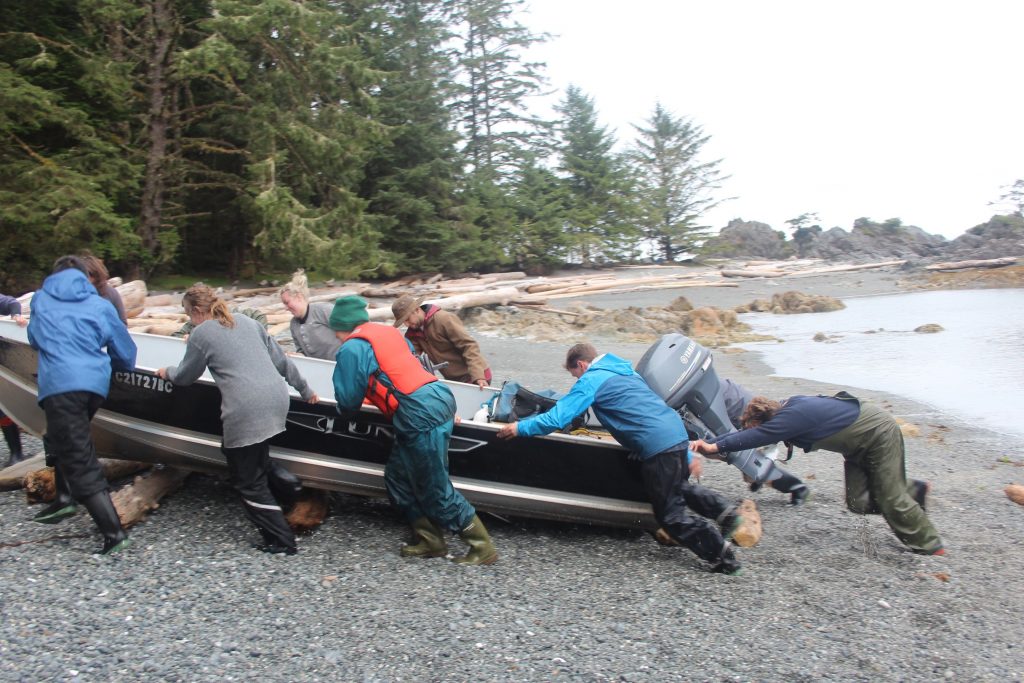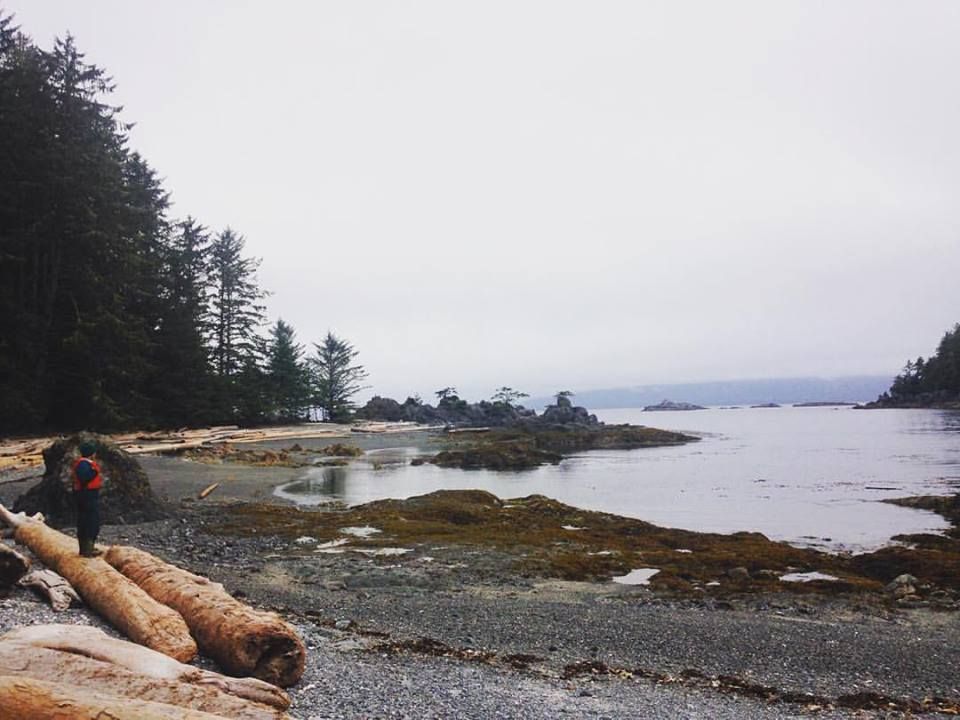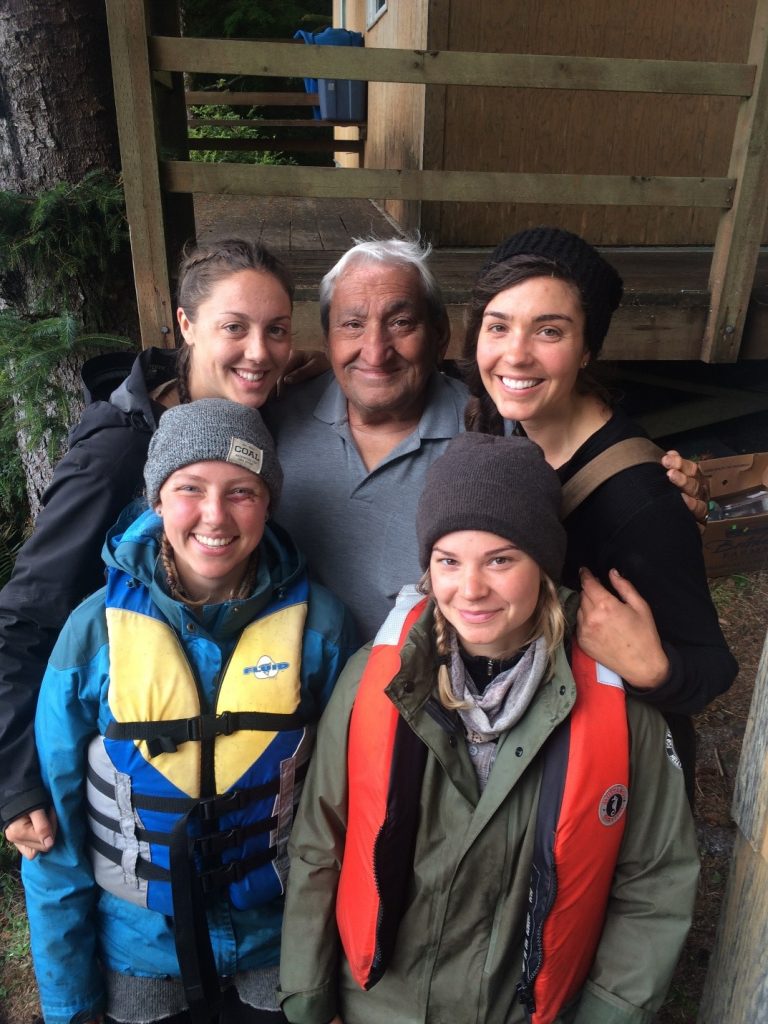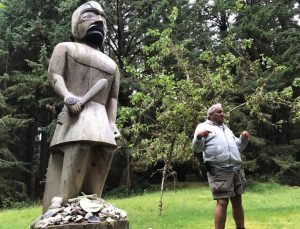
As we loaded our gear on the boats at the dock in Bamfield, I was filled with both excitement and anxiety. I had no idea what to expect from the next the 14 days living on an island in the middle of Barkley Sound with a group of people I had just met. Within the first couple days of getting oriented and situated with camp life I began to lose track of the days, fully immersed in the gorgeous landscapes of the Broken Group Islands and the research at hand. Our home for the past two weeks was Nettle Island, or Tl’ihuuw’a in Nuu-chah-nulth, which was once a thriving Tseshaht village. Camp life was made possible by our outstanding cook Wanda, Tseshaht First Nations community member whose mother was born at Kakmakimilh, a former Tseshaht village on the nearby Keith Island and the site of our excavation. Having someone who knew people who actually lived at the site we were excavating really put things in perspective for me. This wasn’t just an archaeological site with the sole purpose for research, this was once somebodies home, people were born here and had lived their entire lives here. Hearing stories of peoples lives at Kakmakimilh from Dennis during our lunch break was a constant reminder that we were guests here and extremely privileged to have the opportunity to work alongside the Tseshaht to uncover a part of their rich history.
Starting our excavation on KEITH island we set up two 2x2m units (EU 5 and 6), these units were chosen based on earlier probe tests that yielded what appeared to be a shell absent midden, exemplifying black greasy soil, characteristic of a typical midden matrix. I was assigned to unit 6 which was situated upon a downward slope. This made excavating our first several layers difficult, but provided us with the kinds of challenges in topography archaeologists must adapt to in order to perform effective excavations. Upon excavating our unit, we began to notice the absence of shell, fauna and any sort of cultural material. At the time this made myself and the others in the unit a little discouraged, but from the constant encouragement from the instructors, we learnt that patience and positivity among your excavation unit are fundamental aspects of archaeological research. After about 4 days of excavating, we had discovered what appeared to be an ancient shoreline, encountering isolated patches of sand in the matrix and an abundance of small water worn gravels. Additionally, in this beach layer we discovered what seem to be several chert flakes, with associated charcoal samples for radiocarbon dating.
Continuing our excavations at Keith Island, we opened up two new excavation units 7 and 8. Unit 8 which myself and the others from unit 6 were assigned to, was located on the back of a ridge that ran parallel to unit 7. As a team, we decided where to situate our 2x2m unit, collectively agreeing that it would be best to intersect the sloping ridge. This would allow us to hopefully yield a rich deposit from the midden and have an indicative image of the stratigraphy of the overall site. Upon excavating our top layer, we encountered a moderate amount of historic artifacts, differing from unit 7 where historics were plentiful in the first layer. We then encountered the shell midden layer which to my excitement had a diversity of shellfish species. This layer was also home to an extensive amount of faunal remains, with bird, fish, land and sea mammal all appearing. Amongst the faunal remains we found several modified bone tools, including a deer ulna that had probably been used to pry open shellfish. Holding this tool in my hand was somewhat surreal, It was amazing to think that hundreds of years ago someone had hunted this animal, fashioned this tool and then used it to provide for their family.
Spending this time in a place so unique with such a diverse group of people spanning cultural boundaries and many different fields of research made the last couple weeks truly special. Whether it was around the fire or during dishes, or having lunch at what Iain claimed to be “the best lunch spot in the Broken Group”, every moment of the past 16 days was made special by every person involved. The past few weeks in the Broken Group was overall a grounding experience that helped me grow as a person and taught me invaluable lessons and skills that will help me in future archaeological endeavors. Concluding my 2017 field experience I am grateful to everyone who made it possible, Kleco Kleco!

